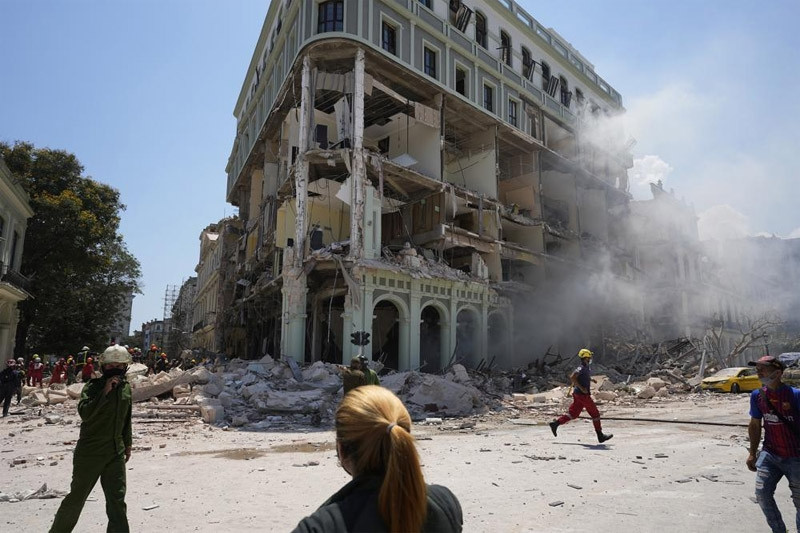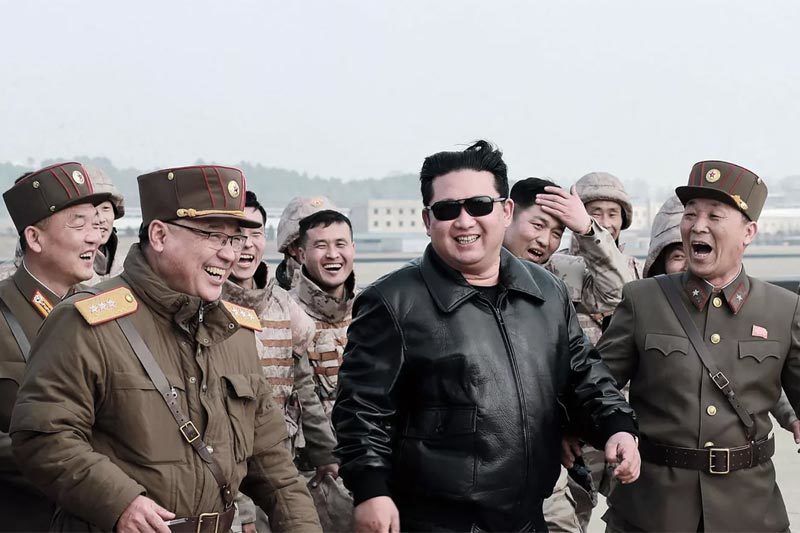The spirit and experience of fighting with Western weapons are the factors that help Ukraine cause many difficulties for the operation of Russian forces.
During a hearing on April 7 in the US Senate, Chairman of the Joint Chiefs of Staff America Mark Milley said that the Ukrainian army had been successful in the first phase of the operation, but warned that the conflict would still be prolonged and the end was difficult to predict.
Sébastien Roblin, a journalist specializing in military and international security issues for Forbes, NBC News and the National Interest, said that in a month and a half of fighting, Ukraine took advantage of many favorable factors to hold back forces. Russiacausing Moscow to give up its goal of attacking the capital Kiev and focus on the eastern front.

Ukrainian soldiers carry NLAW anti-tank missiles in the capital Kiev in early March. Photo: AP.
The first factor pointed out by Roblin is spirit of resistance and combat experience of the Ukrainian army against a much stronger opponent.
When Russia began the military campaign with a force of about 150,000 troops with overwhelming advantages in air, armored vehicles and long-range missiles in all three directions of attack, Ukrainian military units did not panic and dispersed. disintegrate.
US intelligence did not believe that the Ukrainian army could stop the advance of Russian forces for more than a week, prompting them to recommend that President Volodymyr Zelensky be evacuated. However, Mr. Zelensky flatly refused and often appeared on television and social networks to encourage the fighting spirit of soldiers and people. This is considered an important driving force to strengthen Ukraine’s resistance, according to Roblin.
After many years of fighting with separatist forces in the east, the Ukrainian government army also accumulated a lot of combat experience and made the most of asymmetric warfare.
They did not seek to prevent Russia’s superior power at the border, but took advantage of the vast territory to stretch the enemy’s formation, then actively launched rapid counterattacks, ambushing the armored formation. enemy forces, harassing logistics lines, causing a 64 km long Russian military convoy to be stuck in the suburbs of Kiev for several weeks.
Kiev also abandoned the defenseless empty areas, in order to focus on protecting the densely populated cities of strategic importance. Despite great pressure, they were able to hold out and resist for weeks in besieged cities like Chernihiv or Mariupol.
The Ukrainian infantry did not concentrate in large formations, but rather divided into squads to avoid being surrounded and suppressed, and then launched rapid attacks to withdraw quickly into the enemy’s formation.
However, Roblin also pointed out that this tactic is unlikely to succeed if the Ukrainian military is not strengthened by range of modern weapons supported by the West.
About 20 countries, most of them NATO members and the European Union (EU), have poured weapons, mainly anti-tank guided missiles (ATGMs), to Ukraine since Russia launched a military campaign in Ukraine. this country at the end of February.
During this campaign, Western intelligence determined that Moscow mobilized 75% of battalion-level tactical units (BTGs) in their payroll, mainly mechanized formations possessing strong firepower to quickly crush the ability to opponent’s resistance.
However, BTG is very vulnerable to modern Western ATGMs, which have very high accuracy and power against tanks and armor. The US and British Javelin, NLAW missiles are considered the most dangerous “tank killer” in the world, capable of defeating many modern tanks produced by Russia and other major powers.
Facing the superiority of Russian long-range missiles, Ukraine also sought to disperse aircraft to field bases to avoid being wiped out in a pre-emptive strike. This helps the Ukrainian Air Force maintain the ability to attack Russian infantry units, as well as implement tactics to lure enemy aircraft into the range of anti-aircraft fire.
Kiev also benefits from investment in unmanned aerial vehicles (UAVs), especially the Turkish-made Bayraktar TB2 series. Their small size and radar cross-section make them difficult to detect by enemy air defenses, while each aircraft carries many light surface-to-surface missiles, allowing them to strike key Russian targets such as launch vehicles. anti-aircraft missiles, technical logistics vehicles.
UAV plays a significant role in monitoring the battlefield situation, pointing out targets and correcting ballistics for artillery. This shows that the Ukrainian military has combined Soviet heritage such as artillery and armored vehicles with Western advantages such as intelligence and reconnaissance capabilities.

The appearance of the Ukrainian battlefield after a month of fighting. Click on the picture to see details.
“NATO can learn many lessons from developments on the Ukrainian battlefield. The military situation shows how a country that is inferior in many aspects can still hold back an opponent with superior strength,” Roblin emphasized. .
Duy Son (According to NBC News)
at Blogtuan.info – Source: vnexpress.net – Read the original article here



